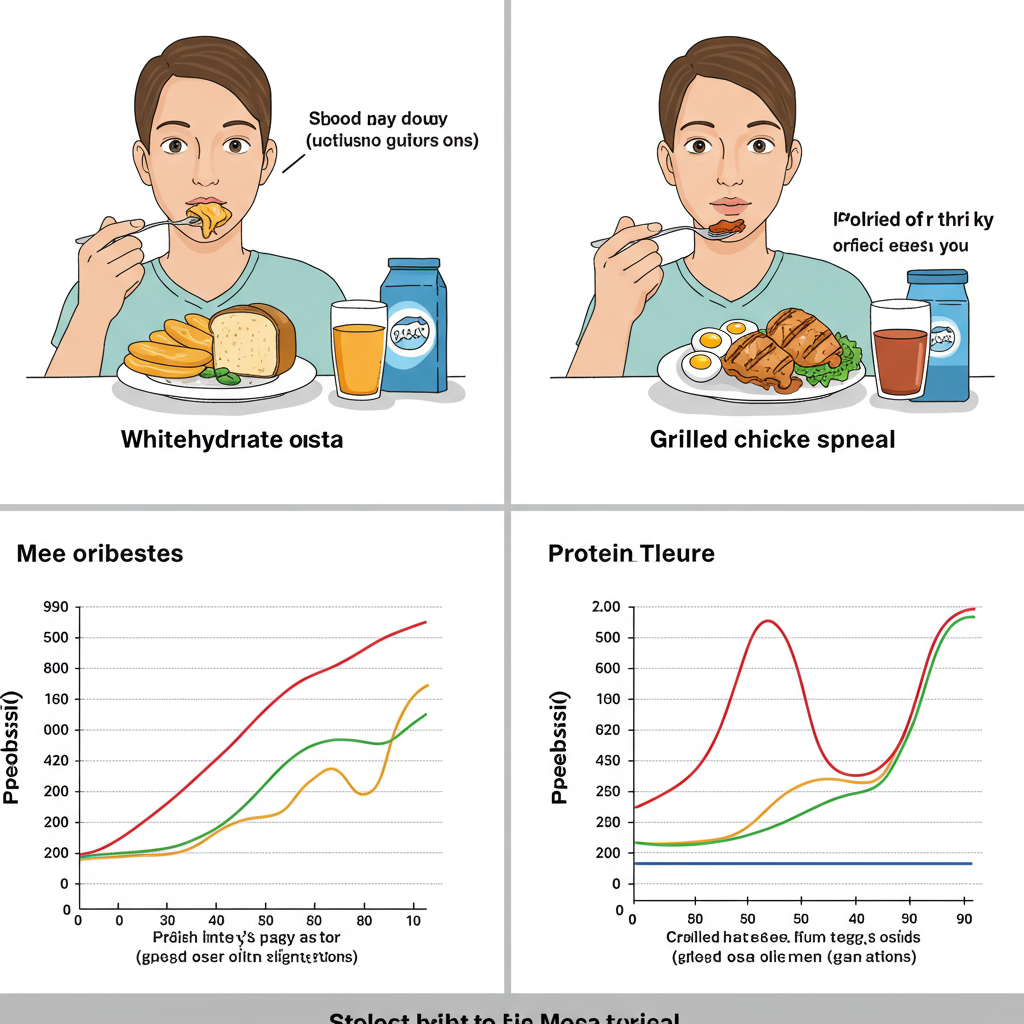The Protein Solution: How Adding Protein to Your Meals Can Tame Blood Sugar Spikes
For those navigating the challenges of diabetes or simply trying to optimize metabolic health, managing blood glucose levels is a daily concern. While we often focus on limiting carbohydrates, there's a powerful dietary ally that deserves more attention: protein. Adding adequate protein to your meals can significantly impact how your body processes carbohydrates and help flatten those troublesome glucose spikes. Let's explore this underappreciated strategy and why it might be the missing piece in your metabolic health puzzle.
The Science Behind Protein's Blood Sugar Benefits
When we consume carbohydrates alone, they rapidly convert to glucose, entering our bloodstream and potentially causing dramatic spikes in blood sugar levels. This is particularly problematic for people with diabetes or insulin resistance. However, when protein is consumed alongside carbohydrates, something remarkable happens.
Protein slows gastric emptying—the rate at which food leaves your stomach and enters your small intestine. This deceleration creates a more gradual release of glucose into the bloodstream, resulting in a more controlled blood sugar response. Additionally, protein stimulates the release of incretin hormones like GLP-1 (glucagon-like peptide-1), which enhance insulin secretion and improve insulin sensitivity, further helping to manage blood glucose levels.
Research has consistently shown that higher protein meals produce lower postprandial (after-meal) glucose excursions compared to lower protein meals with the same carbohydrate content. One study demonstrated that adding 25-30 grams of protein to a carbohydrate-rich meal reduced the glucose area under the curve (a measurement of total glucose exposure) by approximately 20-30%.

Practical Implementation: Adding Protein to Your Meals
Transforming this knowledge into practical eating habits doesn't require complex calculations or special foods. Here are some straightforward approaches:
1. Protein-First Eating: Consider consuming the protein portion of your meal before moving on to carbohydrates. This maximizes the glucose-lowering effect by ensuring the protein mechanisms are engaged before carbohydrates enter your system.
2. Balanced Meal Design: Aim for at least 20-30 grams of protein at each meal. This could look like:
- Breakfast: Greek yogurt with nuts and berries instead of just fruit and granola
- Lunch: A salad with grilled chicken, eggs, or tofu rather than a plain vegetable salad
- Dinner: Leading with salmon or grass-fed beef before consuming starchy sides

3. Smart Snacking: When eating higher-carbohydrate snacks, pair them with protein sources like:
- Apple with almond butter
- Berries with cottage cheese
- Whole grain crackers with smoked salmon
The goal isn't necessarily to increase your overall protein intake dramatically but to distribute protein strategically throughout the day, ensuring it accompanies carbohydrates at each eating occasion.
Beyond Blood Sugar: Additional Benefits of Adequate Protein
The advantages of including adequate protein in your diet extend well beyond glycemic control. Protein provides essential building blocks for muscle maintenance and growth, particularly important as we age and naturally lose muscle mass. This has direct implications for metabolic health, as muscle tissue is metabolically active and plays a crucial role in glucose disposal.
Protein also increases satiety—that feeling of fullness and satisfaction after eating. Enhanced satiety can reduce overall caloric intake and minimize grazing or snacking between meals, which often involves high-carbohydrate convenience foods that may trigger blood sugar spikes.
For those practicing time-restricted feeding or intermittent fasting, protein-rich meals become even more critical during eating windows to maintain muscle mass and maximize metabolic benefits.
Conclusion: Finding Your Protein Balance
While adding protein is a powerful strategy for managing blood glucose, it's important to find the right balance for your individual needs. Those with kidney disease should consult healthcare providers about appropriate protein intake levels. Quality matters too—prioritize whole food protein sources like eggs, fish, poultry, meat, dairy, legumes, and nuts over highly processed protein products when possible.
Blood glucose management isn't just about what you eliminate from your diet but what you strategically include. By making protein a non-negotiable component of your meals and snacks, you're employing one of the most effective, natural strategies to tame glucose spikes and support long-term metabolic health.

Monitor your own response with continuous glucose monitoring if available, or regular blood sugar testing before and after meals to see how this approach works for your unique physiology. You might be surprised by how this simple dietary shift can flatten those glucose curves and improve your overall metabolic health.
References:
-
Nuttall FQ, Mooradian AD, Gannon MC, Billington C, Krezowski P. Effect of protein ingestion on the glucose and insulin response to a standardized oral glucose load. Diabetes Care. 1984;7(5):465-470.
-
Paterson MA, Smart CEM, Lopez PE, et al. Influence of dietary protein on postprandial blood glucose levels in individuals with Type 1 diabetes mellitus using intensive insulin therapy. Diabetic Medicine. 2016;33(5):592-598.






